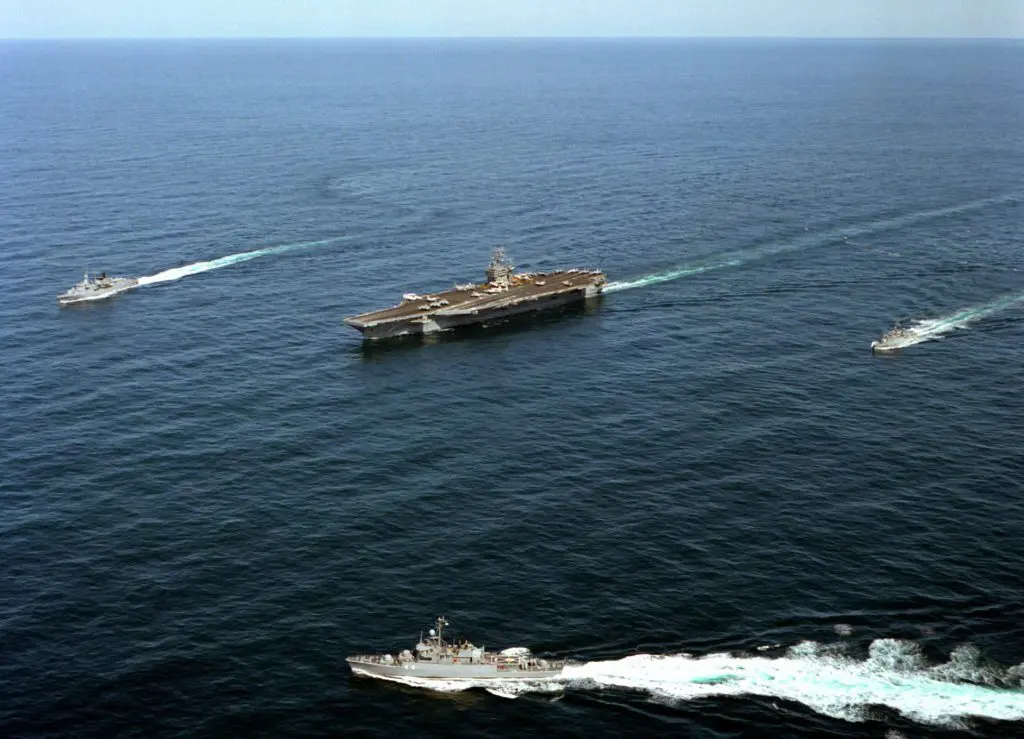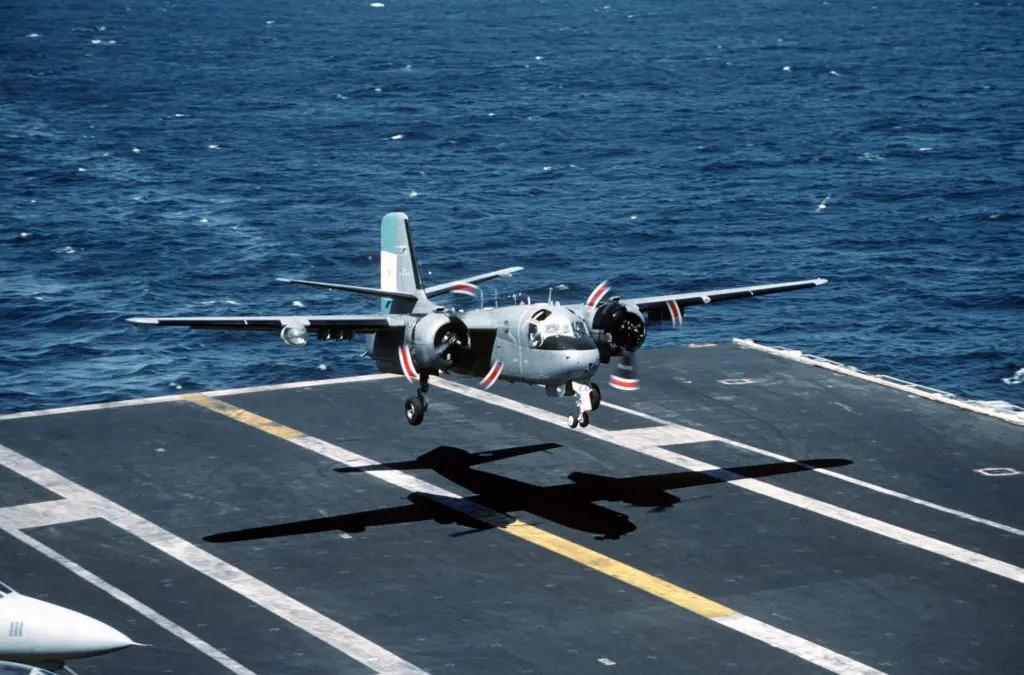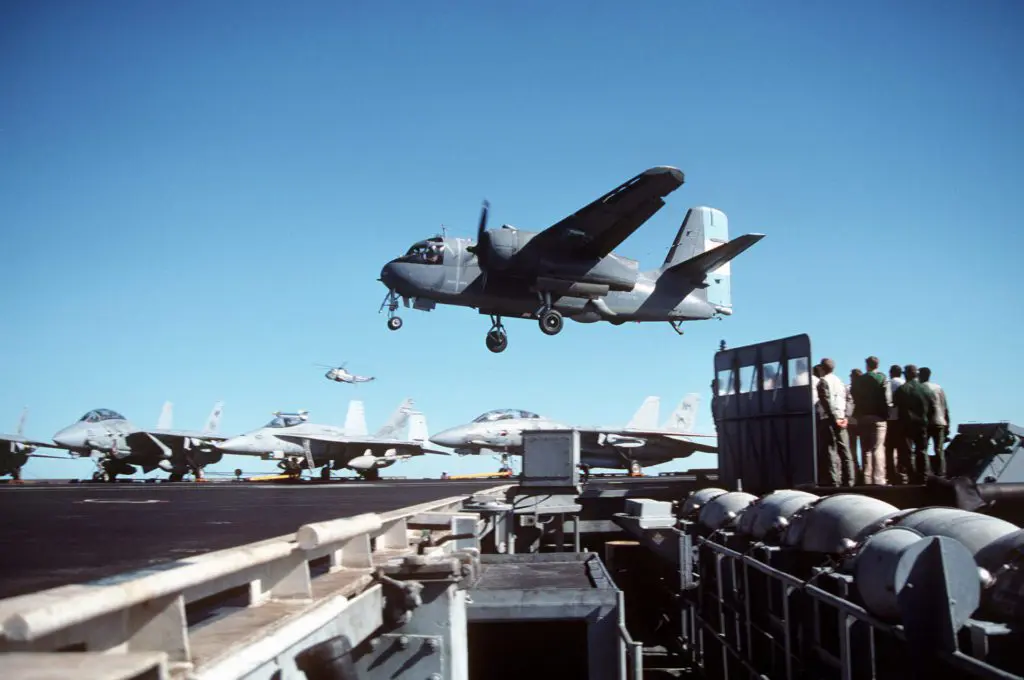In the context of the new geopolitical alignment between Argentina and the United States, the nuclear-powered Nimitz-class aircraft carrier USS “George Washington” (CVN 73) of the United States Navy will arrive in the waters of the South Atlantic during the current month of May. This comes in addition to the arrival of the USCGC Stone, a cutter belonging to the United States Coast Guard, which will conduct exercises with the Argentine Naval Prefecture in the month of April.

Although it has not been disclosed to date whether any combined exercises with the U.S. Navy are planned, if such exercises take place, they will require the corresponding authorization from the National Congress. Apart from the potential exercise, Clarín newspaper reported that a ceremony aboard the USS George Washington is anticipated, with the presence of President Javier Milei, accompanied by Ministers Luis Petri (Defense), Patricia Bullrich (Security), Diana Mondino (Foreign Affairs), the Secretary-General of the Presidency, Karina Milei, the Chief of the Joint Chiefs of Staff of the Armed Forces, Brigadier General Xavier Isaac, and the Chief of the Navy, Carlos Alievi, who would arrive aboard a helicopter.
The passage of U.S. aircraft carriers off the Argentine coast originated in 1990 with the combined exercise “Gringo Gaucho.” Conducted in 1990 (two editions), 1991, 1993, 2001, 2004, 2008, and 2010, the purpose was to allow units of the Argentine Naval Aviation Command (especially the Sea King, Alouette III, Fennec, S-2E/T Turbo Tracker, and Dassault Super Etendard systems) to practice “touch and go” maneuvers on the carriers’ decks following the cessation of activity of the ARA “25 de Mayo” aircraft carrier in 1988. Due to the incompatibility in the catapult system (using arresting gear on Argentine planes), the practices were limited to approach and deck-touch maneuvers.



About the USS George Washington:
Launched on July 21, 1990, and commissioned on July 4, 1992, the USS George Washington (CVN-73) is the sixth nuclear-powered aircraft carrier of the Nimitz class to enter service for the U.S. Navy. It returned to service in May 2023 after a six-year modernization process, including the replacement and reload of the nuclear fuel used for its propulsion, a key element to ensure the ship’s operational capability for the next decades.

Huntington Ingalls Industries, the shipyard responsible, stated that the Refueling and Complex Overhaul (RCOH) process is carried out only once during the ship’s lifespan and involves upgrades to almost all spaces and systems on the ship. Tanks, hull, shafts, propellers, rudders, pipes, ventilation, electrical, combat, and aviation support systems are repaired, improved, and modernized. The work also includes unloading and refueling the ship’s two nuclear reactors, as well as repairs, maintenance, and updates to the propulsion plant.
General characteristics:
- Displacement: 99,000 tons
- Length: 332.8 meters (317.0 meters at the waterline)
- Beam: 76.8 meters (40.8 meters at the waterline)
- Draft: 11.3 meters (12.5 meters maximum)
- Sensors: Various radar systems, including AN/SPS-48E 3-D, AN/SPS-49(V)5 2-D, AN/SPQ-9B, AN/SPN-46, AN/SPN-43C, AN/SPN-41, Mk 91 NSSM, and Mk 95 radars
- Armament: Includes Sea Sparrow Mk 57 Mod3 launchers, RAM RIM-116 launchers, Phalanx CIWS (Close-In Weapon System)
- Electronic warfare: SLQ-32A(V)4, Nixie SLQ-25A
- Propulsion: 2 Westinghouse A4W nuclear reactors, 4 steam turbines, 4 propellers
- Speed: Over 30 knots (+56 km/h)
- Crew: 3,200 crew members
- Aircraft: Accommodates 90 planes and helicopters
- Facilities: 4 elevators, 4 catapults, hangar under the deck
You may also like: Argentine Air Force prepares to receive its first Embraer ERJ-140LR









